Internet of Every(thing)s – Confusing for sure.
IoT. IoE. Same thing some say. Only different.
Too much for any one show really, but we did our best.
Internet of Things (IoT) is difficult to define as it represents multiple protocols and so many different ideas. We will all continue to learn more as the years pass because this so much more than a single idea, a company or term that can be quantified. The opportunity is absolutely astounding however and as we push these limits we will keep setting new boundaries.
This is a long blog bit here below. If you want to just jump to the good stuff…watch the show! Episode 153 The Internet of Things Reality Show
Otherwise, keep reading. You will be rewarded at the end.
New is not that New.
Bill Joy proposed this idea back in 1999 at the World Economic Forum at Davos as part of his “Six Webs” Design Theory. In 2009, Kevin Ashton recounts his own experience with the term in this this RFID Journal article; “ Today computers and, therefore, the Internet are almost wholly dependent on human beings for information. Nearly all of the roughly 50 petabytes of data available on the Internet were first captured and created by human beings by typing, pressing a record button, taking a digital picture or scanning a bar code. Conventional diagrams of the Internet … leave out the most numerous and important routers of all – people. The problem is, people have limited time, attention and accuracy—all of which means they are not very good at capturing data about things in the real world. And that’s a big deal…”
There are very real and substantive things being done with IoT
Our goal for this show was to expose you to the reality and give you a few examples.
Yes the numbers are big. The opportunity is even bigger.
What it is. What it is not.
IoT: The intelligent connectivity of physical devices driving massive gains in efficiency, business growth and quality of life
Now contrast with IoE which includes IoT but is much bigger, more encompassing and much more prone to confusion and overstatement.
IoE is the networked connection of people, process, data and things. It brings together people, processes, data, and things to make networked connections more relevant and valuable by turning information into actions creating new capabilities, richer experiences, and unprecedented economic opportunity for businesses, individuals, and countries.
IoT is the “Things” portion. To be clear, by “things” we’re really talking about the network of sensors, meters, motors, actuators, objects, but not concentrating on the devices, themselves.
At some point between 2008 and 2009, there was a tipping point where the number of connected devices began outnumbering the planet’s human population.
All of these physical objects began connecting to IP networks imposing new and novel requirements on existing networking models.
IoT presents a problem that IT can’t solve on its own. It needs cooperation between the professionals in the information AND operational technology spaces.
Since IoT is taking the network outside the carpeted office and into new places in the network such as the plant and the field, it requires cooperation and support from professionals in the information technology and operational technology (OT) sides of the house.
OT is Operational Technology. These are the folks that provide non-IT technology solutions for the manufacturing floor, the refinery, the oil rig, the powerlines, railyards and the like. They are also the group that deals with the business and regulatory challenges outside of our relatively “clean” IT world.
This is part of what makes IoT a uniquely interesting challenge. A successful strategy here requires both groups working together to design, deploy and operate what has become a new, very essential infrastructure.
Value & challenge in the connectivity
IoT derives its value not from the numerous sensors, devices or even smart objects themselves. These things are rich in data but very poor on information.
Go on.
While the data each of these individual items produces is of little value, IoT enables it to be processed and correlated with other inputs to produce relevant information that can then be used in real-time as actionable knowledge by IoT-enabled applications.
In the longer term, it can be used to a gain deeper understanding for the purpose of developing proactive policies, processes, responses, and plans.
IoT also adds additional complexity to the network of course.
But that’s not the only thing that makes it unique. We should consider Location, Form, Value in the Aggregate and Connectivity.
- LOCATION: IoT lives “outside”. Outside of what we traditionally call ‘carpeted space.’ IoT is going to receive information right from the source. This requires dramatically different network elements. Smaller, more self-contained switches and routers for the fields, plants, or other operational environments. These are naturally challenging environments that include harsh weather, significant amounts of vibration, dust, and anything else you can imagine. These devices must be rugged. Built to function under the most adverse conditions.
- FORM: These are Objects or Things, not computing devices – It’s important to note that these objects are networked together, yet they’re independent of your network – you don’t own them; oftentimes can’t see them; and you don’t control them in any way, shape, or form. Yet they’re sending petabytes of data through your network – data that’s required by the applications to function properly.
- VALUE IN THE AGGREGATE – Unlike today’s monolithic applications, where the main value is delivered locally from the application’s code, IoT applications derive most of their value from the intelligence that results from the sum of all these parts. The individual data point within IoT is simulatanously important and worthless. The network is not just required – it just is. The application is merely the method employed to access that intelligence.
- CONNECTIVITY- M2M – The network, and its design, has NOTHING to do with communication or data in that traditional sense. In fact, it is not about connecting people in any way whatsoever. The IoT network is built to deliver automation, visibility and control between the devices and processes that must interact to create value.
Security Challenges
As usual, history provides an important context for understanding the unique risk. IoT may be a new and exciting term, but the idea of connecting many operational devices or sensors has been around a long time. This notion has been important for advances in many factory or automation areas for years.
The biggest change right now is that these formerly closed networks have suddenly been connected, often with little forethought, to what it is then connected to. (Its like approving of a friend for my pre-teen son to hang out with and forgetting he has a ‘fun’ older sister).
We are now connecting things now that were designed at a time when ‘internet’ connectivity was not even imaginable.
Billions of new devices, located in more places throughout the world – many of which are insecure locations – are sending sensitive data through the network … however, these devices reside outside the secure embrace of the existing network. You don’t own them; oftentimes can’t see them; and you don’t control them in any way, shape, or form. Yet they’re sending petabytes of data – data that’s required by the applications to function properly. And who chases a problem when things seem to be working correctly?
IoT doesn’t replace your existing network. It simultanously supplements and relies on it.
History of the Factory Floor
Automation started in the 60s when the first digital computers and controllers began to make their way in to manufacturing and processing environments. Many of the existing pneumatically-controlled systems were replaced with digital transmissions using proprietary networks.
With the advent of the microprocessor in the 1970s, Programmable Logic Controllers (PLC) and distributed control systems (DCS) started gaining widespread popularity as many businesses turned to hierarchical forms of control.
Fast forward 10 more years and local area networks began connecting computers with industrial automation systems. During the last years of last century, as ethernet began to emerge as the protocol of choice for IP networking, a specific form of ‘industrial’ ethernet was developed to address the unique requirements for network communication in this area.
Ease-of-interoperability between equipment became part of the automation process. Standardization in the protocol helped to covercome the proprietary data roadblocks and enabled more resilient and efficient automation networks, secure, increased visibility, manageability and uptime.
The commonality between what is essentially two sides of the same protocol has set us up for a convergence between systems.
Learn more about Connected Factory
What makes a Switch ‘Industrial’?
Ethernet is certainly a standardized protocol, but there is a big difference between ‘commercial’ and ‘industrial’ switches.
Industrial switches are designed for a broad range of tough conditions – inside and out.
Unique design considerations on the inside may emphasize deterministic delivery of transmitted data to increase timing accuracy critical for the many control systems dependent on that data flow. Think about it, the economic cost of interruption in this environment is much higher than commercial installations.
On the outside, these ‘tough’ conditions would include temperature extremes, high vibration or severe electrical noise.
You can’t use fans to cool an industrial switch – dust would choke it…fans often fail too easily. But that heat must still be accounted for
The main application of these networking devices is to provide intelligent connectivity to the “things”, and the things are often located in s0me very harsh environments.
From Factory to Utilities
Moving beyond the factory floor, devices – each with embedded sensors, actuators, communication, and computing elements – can create a smart environment with a wide range of applications in healthcare, public safety, transportation, utilities, and the home.
For many years, utility companies had no real visibility to their systems. People had to call to report trouble. Equipment problems were not discovered until they failed and created outages. This all meant that life for those impacted stopped as the utility scrambled to restore service. All without accurate information, at a large expense and with great criticism from customers, elected officials, regulators, media and more.
Today, utilities are being pushed to redesign their operations. They must keep pace with increasing demand, regulatory requirements, aging infrastructure, customer side generation (like solar on the roof) that they are required to purchase and integrate into their system. Although utilities have a reputation for moving very slow and being risk averse, many are embracing these changes energetically.
Learn more about IoT and Utilities
FOG Computing
FOG Computing is based on a model in which data, processing and applications are concentrated in devices at the network edge rather than existing almost entirely in the cloud.
That concentration means that data can be processed locally in smart devices rather than being sent to the cloud for processing.
This is critical for IoT since the number of network connected devices is almost limitless. These devices can often produce huge amounts of data.
It’s often a waste of time and bandwidth to ship all the data from these IoT devices into a centralized, cloud model and then transmit the cloud’s responses back out to the edge. This work should take place in the routers themselves.
Cisco IOx enables fog computing through the combination of Linux and Cisco IOS on a single, networked device.
IOx allows data collection to move closer to the source, sensors and systems of origin. It reduces the cost of data collection by eliminating a separate server to run the interface or application and supports demanding utility and industry environments requiring hardened devices.
- Learn more:
- Fog Computing, Ecosystem and Architecture,
- Fog Computing ,
- Roberto De La Mora’s 3 part blog series on IOx
Connected Rail
Some may think trains are just steel wheels on steel rails. But it is so much more.
Depending on where you live – you may not think much about this, but its big and getting bigger. Its always looking to be more efficient as well.
Trains deal with moving people and stuff. They can already do it more efficiently than any other form of transportation
Railroads are four times more fuel efficient than trucks. They can move one ton of goods about 500 miles on a single gallon of fuel.
They are on average 20 times more efficient than the automobile for transportation of passengers…assuming they are filled to capacity.
In fact, efficiency goes way down when they run with anything less.
Technology innovation is therefore critical for an industry that owns, maintains, and upgrades its own infrastructure to the tune of $20 billion a year. Inefficiencies result in higher operating costs. Improving the operating ratio by just 1 percent can result in a saving upwards of $800 million.
The challenge, as it always is…the complexity, scale, volume, velocity, safety, security, and regulations.
Success in the rail industry is closely linked with its logistics prowess.
They schedule crews, locomotives, freight cars, tracks and terminals….but once these get rolling….the slightest snag in the system – bad weather, breakdowns, unscheduled maintenance, you name it—will unravel even the best-laid plans.
What an ideal situation in which to apply the Internet of Things.
Thousands of data points that don’t mean much on their own…but when combined…when networked…they can work together to dramatically improve on every since challenge this industry faces.
Cisco is helping to transform almost every aspect of the rail industry
Transforming the riding experience with on-board Wi-Fi, video, and mobile applications that deliver entertainment, advertising, and scheduling information. Train stations are getting an overhaul too with new services like “wayfinding” touch-screen kiosks to help travelers plan trips, check schedules and take advantage of special offers.
All of this is driving increased ridership which as we know, is key to wringing the efficiency, the value, out of rail transportation.
Cisco Connected Trackside replaces old proprietary SCADA networks with converged IP networks. Connected sensors facilitate asset management, controls, surveillance and other services.
This network reduces complexity, lowers costs, and improves safety.
Rail safety is of course a really big deal and for the U.S. At least, its tied to a Federal Mandate.
The innovation is in PTC, which stands for Positive Train Control.
A system for sending real time information to crew members, and the train itself, about areas where the train needs to be slowed or stopped.
The status of approaching signals. Position of approaching switches, speed limits at approaching curves, and other reduced-speed locations, crossings or where work is being done.
PTC communicates with the train’s onboard computer to warn the engineer and display the safe braking distance based on speed, length, width, weight, and the grade and curvature of the track. If the engineer does not respond to the ample audible warning and screen display, the onboard computer will activate the brakes and safely stop the train.
This requires the communication and coordination from a lot of different places. Cisco partnered with Lilee Systems to provide a state-of-the art PTC System.
This system includes
- The 819 Integrated Services Router with 3G and LTE for mobile WAN access as well as onboard Wi-Fi, live video streaming and other services
- Industrial ethernet switches that can send power to..
- Ruggedized High-Def IP based video cameras
- Wireless Access Points
Learn more:
SIDE NOTE: Railway Signaling is a system used to control railway traffic safely to prevent trains from colliding. Being guided by fixed rails with low friction, trains are uniquely susceptible to collision since they frequently operate at speeds that do not enable them to stop quickly or within the driver’s sighting distance. Most forms of train control involve movement authority being passed from those responsible for each section of a rail network to the train crew. Not all methods require the use of signals, and some systems are specific to single track railways.
The signaling process is traditionally carried out in a signal box, a small building that houses the lever frame required for the signalman to operate switches and signal equipment. These are placed at various intervals along the route of a railway, controlling specified sections of track. More recent technological developments have made such operational doctrine superfluous, with the centralization of signaling operations to regional control rooms. This has been facilitated by the increased use of computers, allowing vast sections of track to be monitored from a single location. The common method of block signaling divides the track into zones guarded by combinations of block signals, operating rules, and automatic-control devices so that only one train may be in a block at any time.
Even more reading…
Thank You.
If you have read this far….I should send you a TechWiseTV T-Shirt… ? Hello, McFly?
I may have enjoyed the research on this show more than any other in recent memory. Did you watch the show yet? Do it now:
Episode 153 The Internet of Things Reality Show
Special thanks to: Roberto De La Mora, Kathy Tebben, Marty Collins, Jeff Aboud, Barry Einsig, Marty Collins, Jenny Gomez, Carol Barret, Yuta Endo and Carol Barret.
Your Friend,
Robb

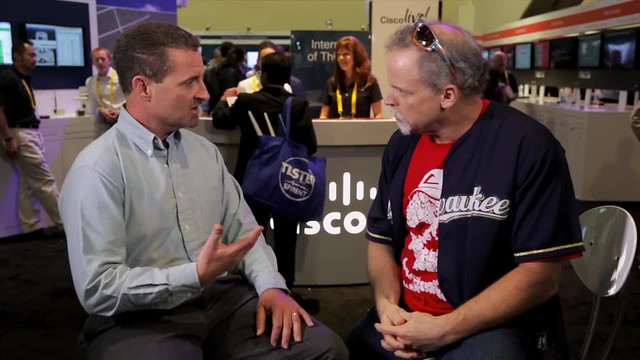
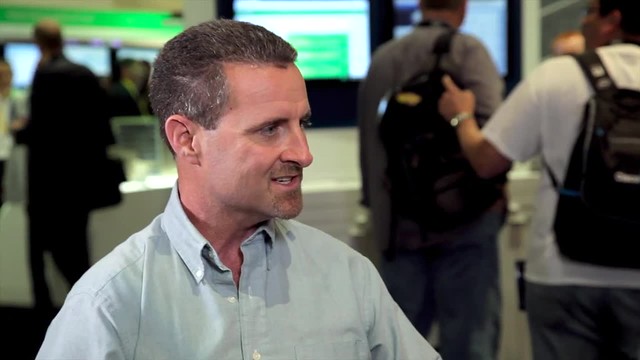
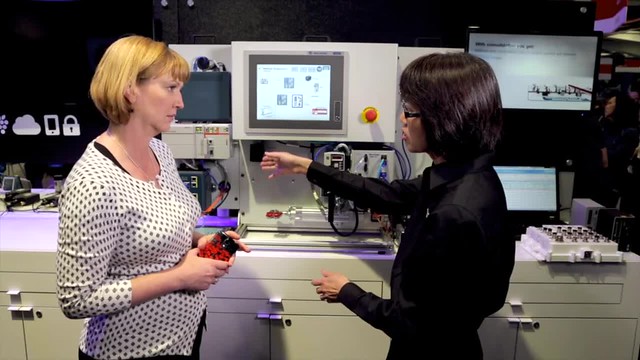

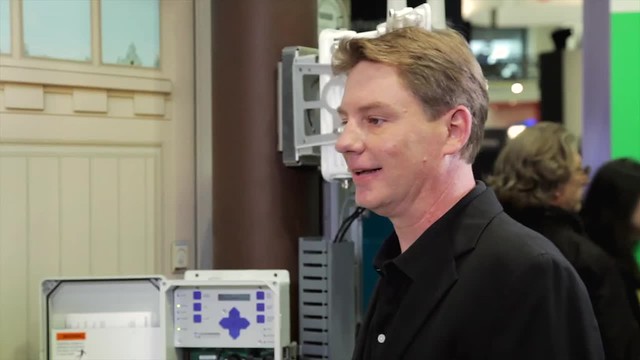

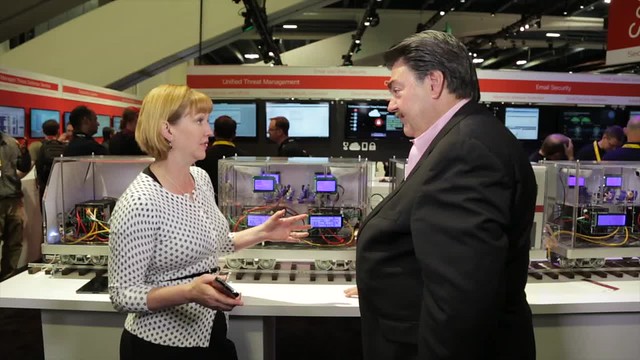
I can haz t-shirt? I read the whole thing! 🙂
I’m sorry Tina. Your lack of spelling skilz may eliminate you from consideration. Your presence within the show however could certainly be considered a mitigating factor. I will pass your request along to the t-shirt adjudication committee. Please send two forms of identification. A small non-refundable deposit in an amount equivalent to your interest level and quality expectations for said shirt.